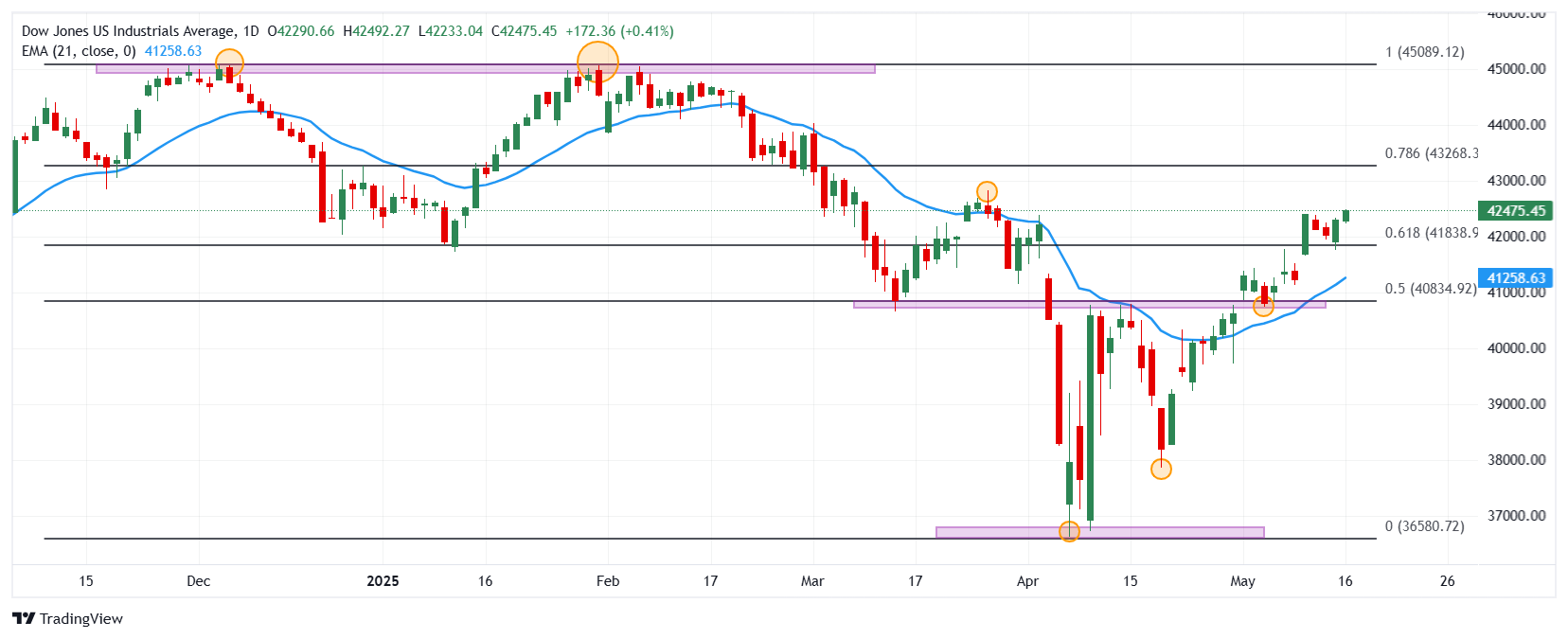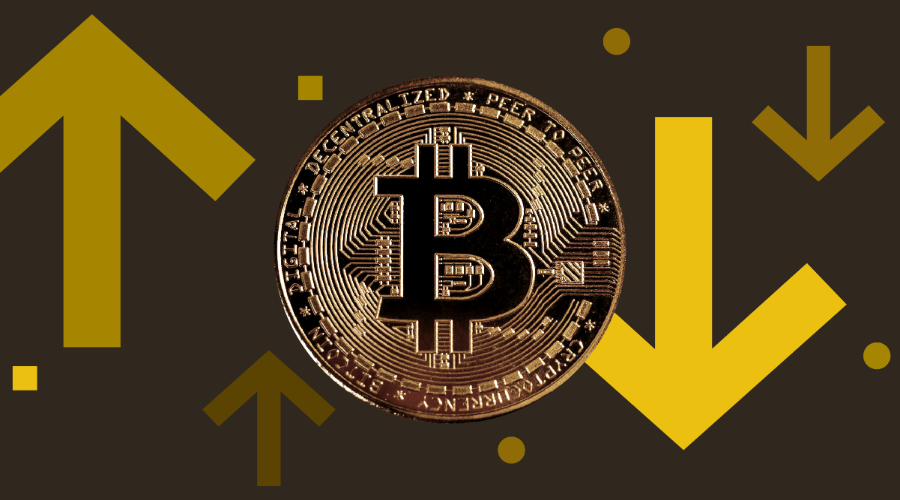- The Dow Jones wins 0.34% in the day, reaching maximum of March 27 in 42,457.
- The Nasdaq 100 rises 0.20% daily, oscillating within the operational range of the previous session at 21,332.
- The S&P 500 advances 0.35% today, led by modern (MRNA).
- The consumer’s feeling index of the University of Michigan is located at 50.8 points in May, below market expectations.
The Dow Jones established a minimum of the day in 42,233, attracting buyers who promoted the maximum index of March 27 in 42,457.
The Dow Jones industrial average began negotiations at 42,290, while in the Nasdaq 100 technological index opened at 21,360. The S&P 500 began operating in 5,918, maintaining the medium -term bullish trend.
Nike and 3M drive Dow Jones to profit zone
The Dow Jones index rises 0.24% today, operating when writing about 42,449.
Nike’s titles rebound 1.70% on the last day of the week, approaching maximum of April 2 at $ 63,75, signing its second consecutive rise.
In the same tune, the values of 3M earn 2.23% daily, reaching maximum of March 27 in 152.12 $, leading profits in the stock index.
In this scenario, Dow Jones wins 104 points, reaching maximums of March 27 in 42,457.
Micron Technology and Zscaler maintains in Nasdaq 100 on positive terrain
The Nasdaq 100 Technological Index rebounds 0.20% in the day, establishing a daily maximum in 21,420.
Micron Technology (MU) shares have a gain of 2.72% reaching maximum of March 24 at 98.18, spinning two consecutive days upwards.
On the other hand, Zscaler titles (ZS) advance 2.59% on Friday, visiting maximums not seen since February 16, 2024 in 253.59 $.
The Nasdaq 100 advances 36 points, in the middle of a day with little volume, consolidating within the operational range of the previous session at 21,357.
The S&P 500 is consolidated at six -week maximums despite the US disappointing economic data.
The consumer’s feeling index of the University of Michigan was 50.8% in May, falling from 52.2 points observed in April. This figure is below the estimates of 53.4 points.
Despite these results, the S&P 500 rebounds 0.36% on Friday, going up 21 points, being held at maximums not seen since March 3 in 5,936.
Modern (MRNA) shares rebound 5.24% today reaching two days at $ 25.06, ending a streak of three consecutive days with losses and leading the profits in S&P 500.
Technical Analysis of Dow Jones
The Dow Jones established a short -term support given by the minimum of May 6 in 40,747. The following key support is 36.614, minimum of April 7. Upwards, the closest resistance is observed at 42,820, pivot point of March 26.
Dow Jones daily graphics

Dow Jones Faqs
The Dow Jones Industrial Avenge, one of the oldest stock market indexes in the world, consists of the 30 most negotiated values in the United States. The index is weighted by the price instead of capitalization. It is calculated by adding the prices of the values that compose it and dividing them by a factor, currently 0.152. The index was founded by Charles Dow, also founder of the Wall Street Journal. In recent years it has been criticized for not being sufficiently representative, since it only follows 30 companies, unlike broader rates such as S&P 500.
There are many factors that promote the Dow Jones Industrial Average (DJIA) index. The main one is the added performance of the companies that compose it, revealed in the quarterly reports of business benefits. The American and world macroeconomic data also contribute, since they influence investor confidence. The level of interest rates, set by the Federal Reserve (FED), also influences the DJia, since it affects the cost of credit, on which many companies depend largely. Therefore, inflation can be a determining factor, as well as other parameters that influence the decisions of the Federal Reserve.
Dow’s theory is a method to identify the main trend of the stock market developed by Charles Dow. A key step is to compare the direction of the Dow Jones Industrial Avenge (DJIA) and the Dow Jones Transportation Average (DJTA) and just follow the trends in which both move in the same direction. The volume is a confirmation criterion. The theory uses elements of maximum and minimum analysis. Dow’s theory raises three phases of the trend: accumulation, when intelligent money begins to buy or sell; Public participation, when the general public joins the trend; and distribution, when intelligent money abandons the trend.
There are several ways to operate with the DJ. One of them is to use ETF that allow investors to negotiate the DJ as a single value, instead of having to buy shares of the 30 companies that compose it. An outstanding example is the SPDR Dow Jones Industrial Avenge ETF (day). Future contracts on the DJ allow the specular operators about the future value of the index and the options provide the right, but not the obligation, to buy or sell the index at a predetermined price in the future. Investment funds allow investors to buy a part of a diversified portfolio of DJ values, which provides exposure to global index.
Source: Fx Street
I am Joshua Winder, a senior-level journalist and editor at World Stock Market. I specialize in covering news related to the stock market and economic trends. With more than 8 years of experience in this field, I have become an expert in financial reporting.







